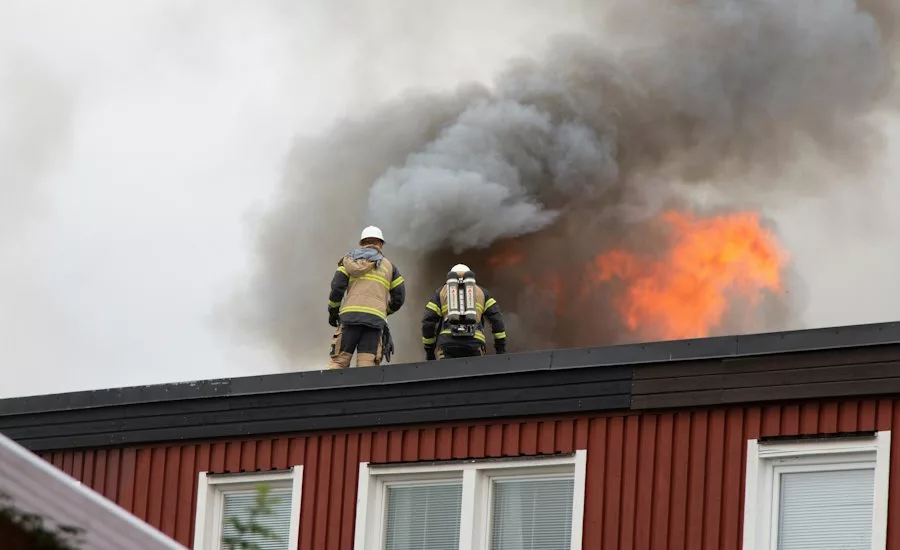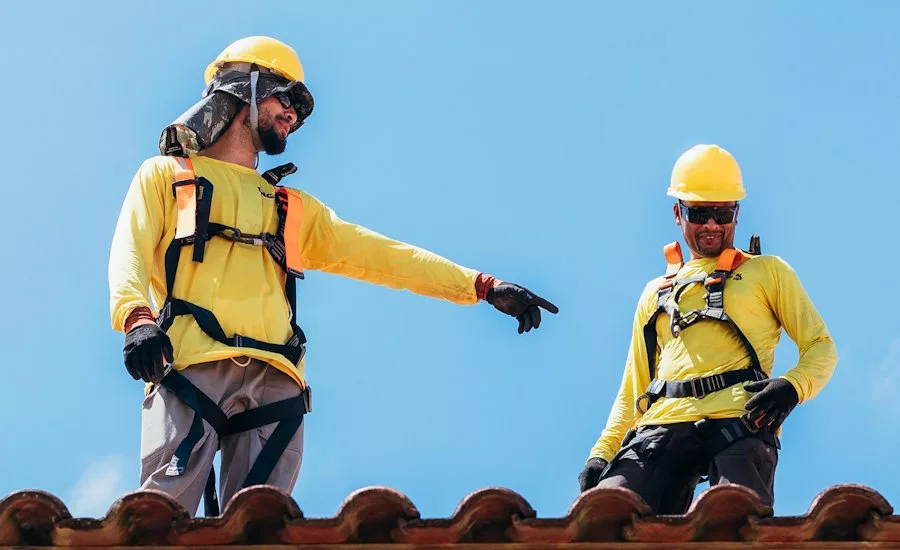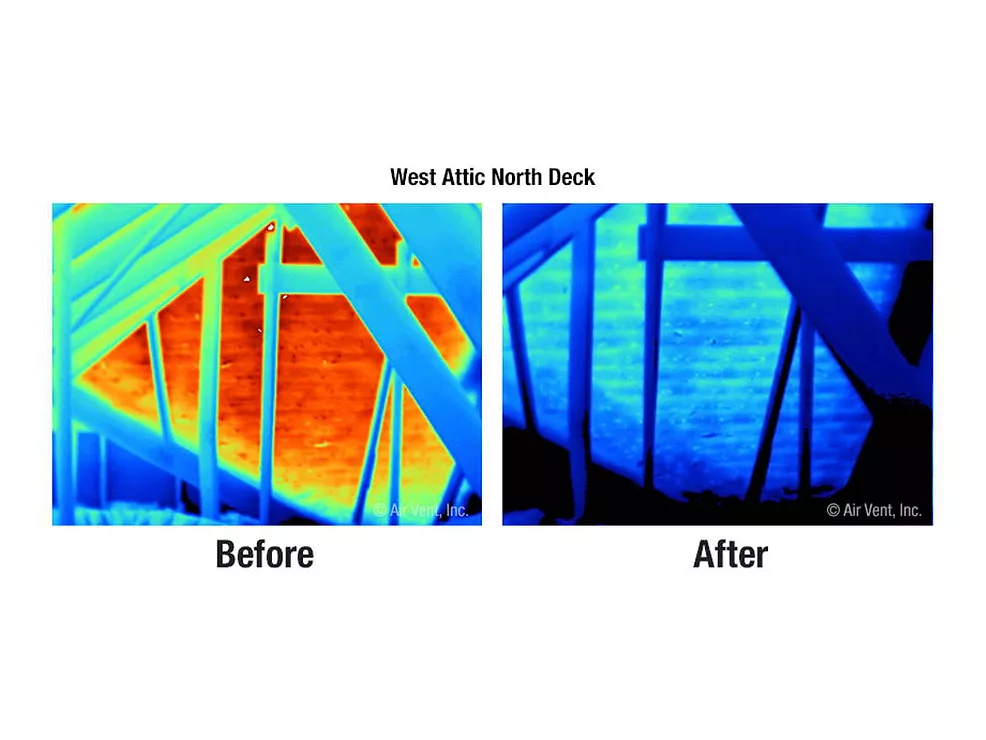Roofing Safety
School Roof Fires Surge: 3 Incidents in 2 Weeks
Experts say preventing fires like these require common sense and training

Photo by Aleks Magnusson via Pexels.
In two weeks, three stories about roofing crews inadvertently causing fires on rooftops made headlines, two of which were school buildings.
No injuries were reported at any of the incidents, but it highlights a need for roofing contractors to remain vigilant when working with fire or combustible materials.
The third recent roofing fire occurred on March 3 in a neighborhood outside of San Diego, Calif. The Times of San Diego reports that the blaze erupted around 11:30 a.m. and was reportedly sparked by a roofing crew. When firefighters with the San Diego Fire-Rescue Department arrived, they found the roofers attempting to battle the flames with a garden hose.
The American Red Cross placed the home's sole occupant in an emergency shelter. The damage to the house is estimated to be $120,000, and the cause of the fire is still under investigation.
In late February, a fire occurred on Feb. 28 while school was in session at the Williams Elementary in Farmington, Ark. CBS-affiliated KFSM-TV reports the fire was reportedly connected to a new roofing installation. No students were injured and were safely evacuated.
Earlier that month, a fire damaged the roof, offices, and library at Emerson Elementary in Fitzwilliam, N.H. According to The Keene Sentinel, the school district said the preliminary findings suggest that roofing work conducted on Feb. 21 may have contributed to the fire.
The fire occurred around 7:30 p.m. on Feb. 21, so the building was vacant when it broke out. The school serves 160 pre-kindergarten through sixth grade students, and its oldest parts were built in 1925.
Preventative Measures
The specifics of each incident are unknown, but the one factor uniting them is that roofing work or crews were reportedly involved. Not only can roofing-related fires result in millions of dollars in damage, like the 2018 fire that consumed the Trinity Lutheran Evangelical Church in Milwaukee, but they can also irreparably harm a contractor’s reputation.
Greg Keeler, technical services leader at Owens Corning, has more than 30 years of experience in architectural design and 24 years in code enforcement. He is also a former firefighter, giving him plenty of insight into roofing safety regarding fires.
“Common sense is the number one way to prevent the fires,” he said. “Make sure the people operating the equipment are trained on it. One of the big things is to make sure there is a fire extinguisher nearby.”
Typical sources of fire or ignition on roofs include torches and welding equipment, gasoline, propane, sparks from metal blades and smoking.
Torches are most often used to apply low-slope roofing systems, like modified bitumen. In these applications, which are known as torch-down, fire — usually from open-flame propane torches — heats the products so they adhere to the deck or other materials. If improperly used, the torches can ignite materials, resulting in a fire.
Keeler said the primary method for averting fires is properly training workers to operate torches. This involves learning how to prevent too much heat from building up in one spot and never torching areas that cannot be fully seen.
“A lot of times, those [roofs] are on older buildings and installed on combustible decks,” Keeler said, which can easily lead to fires. “Most newer buildings, built in the last 25 years, if they’ve got a low-slope roof on them, they typically are not combustible because the roof assembly is required to have a fire classification in and of itself.”
Steep-slope roofing like asphalt shingles, metal and tile typically don’t require flames or heat-related tools for installation. Even so, Keeler said a contractor using power tools with dulled drill bits or saw blades can unintentionally generate heat.
“Those can create heat and actually start wood smoldering, and if left unattended or unnoticed, and that smoldering wood gets a good air source, it can cause a fire,” he said.
Resources for Fire Prevention
The National Roofing Contractors Association provides documentation and webinars for fire safety. In a webinar, Rich Treywn, director of risk education and training for the NRCA, said it’s unfortunate that fires caused by roofers are not uncommon.
“We have to face the facts — there’s a lot of things on our jobsites that can cause fires, and that will cause fires if you don’t manage them properly or plan ahead for them,” he said.
However, the number of instances overall is decreasing. According to information from CNA, in 2002, there were 66 torch-related claims. As of 2022, the number was 11, so training like the CERTA program can make a difference.
As the NRCA points out in a safety article detailing the International Fire Code, not only do contractors need operational permits for applying roof coverings with an open-flame device, they should also ensure the following:
- Keep asphalt kettles away from combustible surfaces, materials, and openings by 20 feet
- Properly handle combustible waste materials
- Restrict rooftop obstructions that could hamper firefighter access (like ropes, antennas and cables)
- Follow guidelines for the placement and use of fire extinguishers
With solar becoming more popular, concerns about solar equipment causing a fire on a roof are also rising. Chapter 12, Section 1205 of the IFC provides provisions for rooftop-mounted photovoltaic systems, including smoke ventilation, pathways and labeling for shutdown equipment.
As of May 2024, the IFC has been adopted by 31 states.
The Occupational Safety and Health Administration also has rules and guidelines for roofing contractors regarding fire protection and safety.
Looking for a reprint of this article?
From high-res PDFs to custom plaques, order your copy today!





.webp?height=200&t=1735294415&width=200)



